Nestled in the serene town of Srisailam in Andhra Pradesh, India, Mallikarjuna Jyotirlinga stands as one of the twelve Jyotirlingas, revered shrines dedicated to Lord Shiva. This sacred site attracts thousands of pilgrims and travelers each year, drawn by its rich history, architectural splendor, and profound spiritual significance. The mountain on which this Mallikarjuna Jyotirlinga is located is also known as the “Himalayas of the South”. Entry time in Srisailam is from 6:00 am to 9:00 pm.
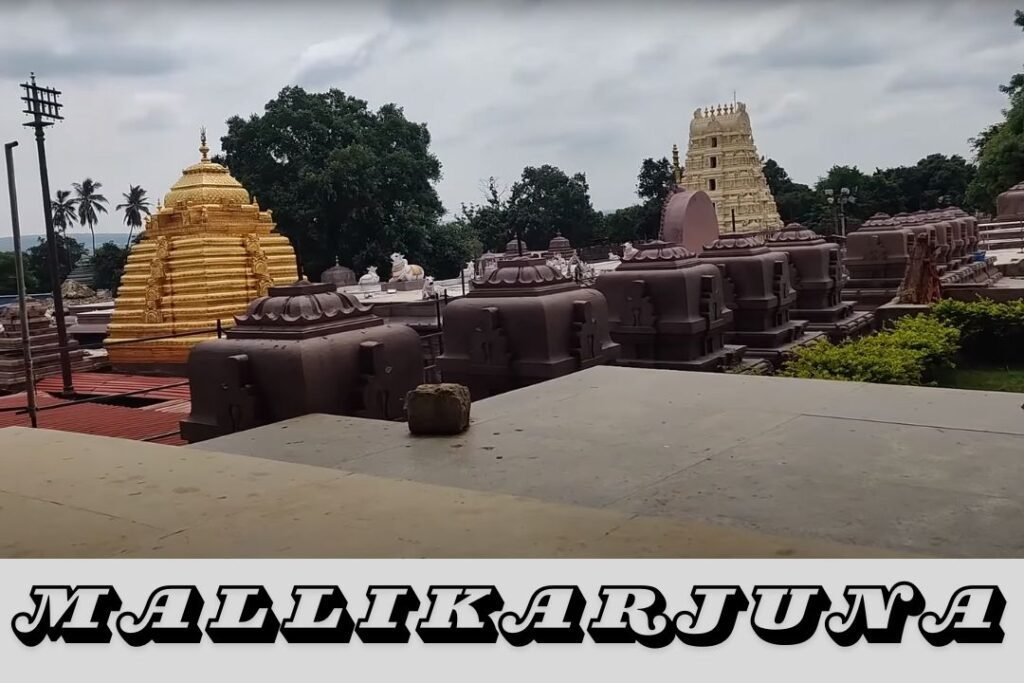
Table of Contents
Historical Significance and Legends
Mallikarjuna Jyotirlinga is enshrined in the historic temple town of Srisailam, which holds a revered place in Hindu mythology. The legends associated with this Jyotirlinga are profound and numerous. One such legend narrates that Lord Shiva and Goddess Parvati decided to stay here after their son, Lord Kartikeya, moved to the Krauncha Mountain. In another legend, it is believed that Lord Shiva appeared here as Arjuna (a form of Shiva) to bless his devotees. The name Mallikarjuna comes from the combination of ‘Mallika’ (another name for Parvati) and ‘Arjuna’ (Shiva).
Temple Architecture and Complex
The Mallikarjuna Temple is a masterpiece of Dravidian architecture, reflecting the grandeur of the Vijayanagara Empire. The temple complex is expansive, with several notable features:
Main Gopuram: The towering gateway or gopuram is adorned with intricate carvings depicting various deities, mythological scenes, and floral patterns. It stands as a majestic entrance, inviting devotees into the sacred space.
Garbhagriha (Sanctum Sanctorum): The inner sanctum houses the Mallikarjuna Jyotirlinga, radiating an aura of sanctity and divine energy. The sanctum is designed to create an intimate space for worshippers to connect with the divine.
Mandapas: These are pillared halls used for various rituals and gatherings. The Sabha Mandapa (assembly hall) is particularly impressive, with beautifully sculpted pillars and ceilings.
Smaller Shrines: The temple complex includes several smaller shrines dedicated to various gods and goddesses, including Ganapati, Nandi, and Parvati, each adding to the spiritual ambiance of the temple.
Spiritual Practices and Rituals
Visitors to Mallikarjuna Jyotirlinga engage in a variety of spiritual practices that enhance their pilgrimage experience:
Abhishekam: Devotees ritually bathe the Jyotirlinga with water, milk, honey and other holy substances. This act of devotion is believed to purify the soul and bring divine blessings.
Aarti: The daily Aarti ceremonies, held in the morning and evening, are moments of intense spiritual energy. The temple priests perform the rituals with chants and hymns, creating a deeply devotional atmosphere.
Pradakshina: Pilgrims often circumambulate the temple complex in a clockwise direction, paying homage to the deities housed within.
Offering of Prayers: Devotees offer prayers and seek blessings for health, prosperity, and spiritual well-being. Many also make vows or commitments as part of their devotional practices.
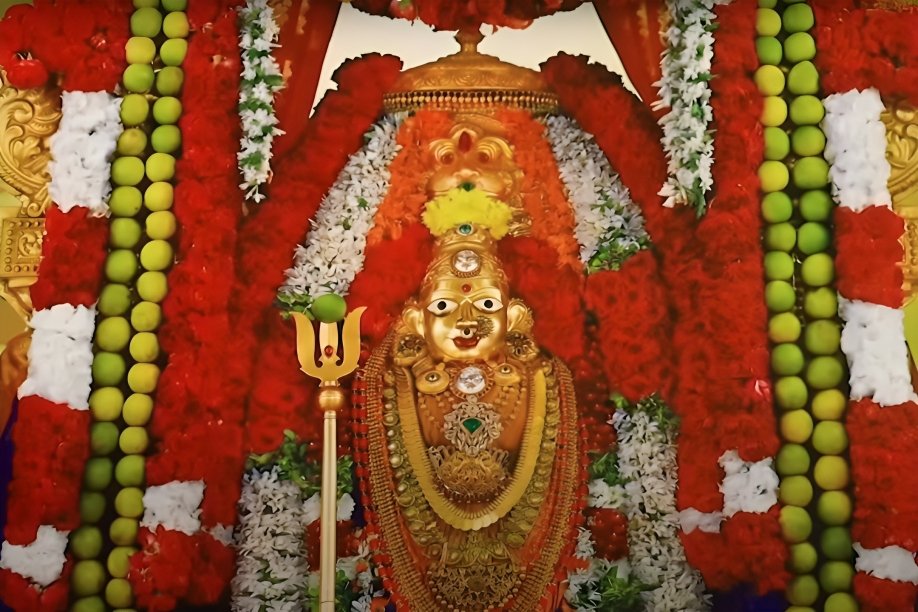
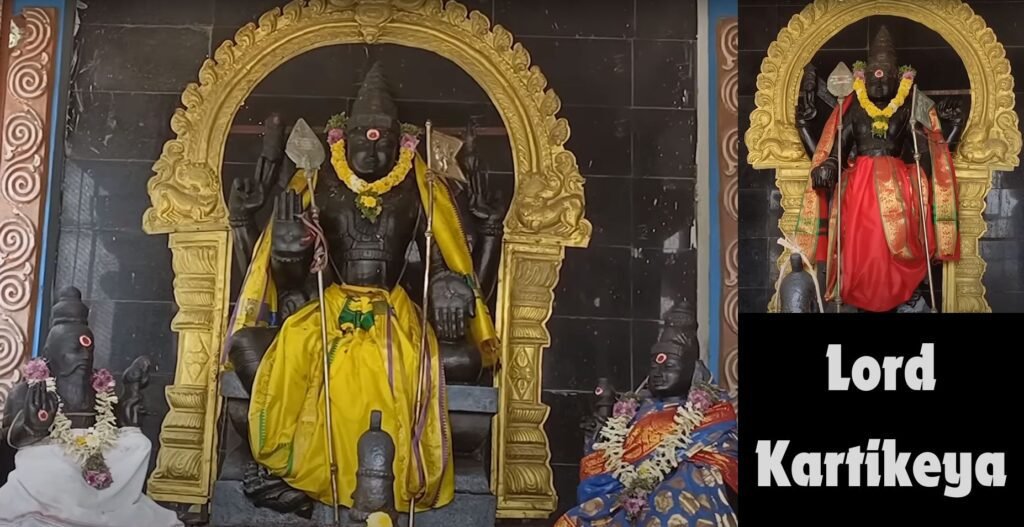

Festivals and Celebrations
Mallikarjuna Jyotirlinga is the center of vibrant festivals that draw thousands of devotees:
Mahashivaratri: Celebrated with grandeur, Mahashivaratri sees devotees fasting, singing hymns, and performing night-long prayers. The temple is beautifully decorated, and special rituals are conducted to honor Lord Shiva.
Kartik Purnima: This festival, occurring on the full moon day of the Kartik month, involves grand processions and devotional activities. It is a time of great fervor and celebration in Srisailam.
Brahmotsavam: An annual festival that spans several days, Brahmotsavam features various rituals, cultural performances, and processions, celebrating the divine presence of Lord Mallikarjuna.
Shiva Parvati Marriage: In Srisailam, a unique and enchanting daily ritual known as the “Shiv-Parvati Kalyanam” or the divine marriage of Lord Shiva and Goddess Parvati is performed with great devotion. This sacred ceremony takes place within the Mallikarjuna Temple, celebrating the eternal union of the divine couple. Devotees from all over gather to witness this auspicious event, which is believed to bestow blessings of marital bliss and harmony. The ritual, marked by traditional chants, music, and offerings, symbolizes the divine love and bond between Shiva and Parvati, providing a spiritually uplifting experience for all who attend.
Surroundings of Mallikarjuna Jyotirlinga Temple
Sri Sakshi Ganpati
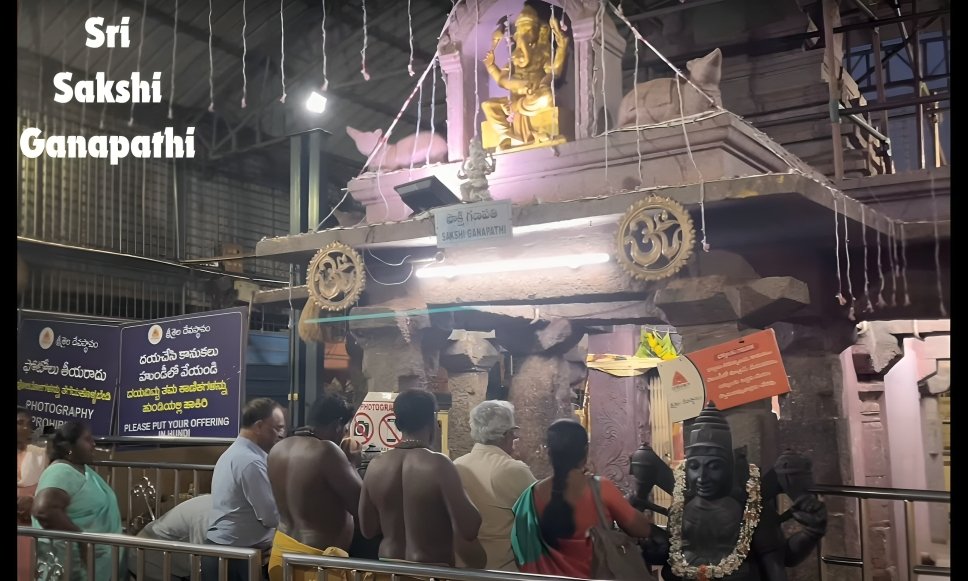
Sri Sakshi Ganpati Temple is dedicated to Lord Ganesha and is believed to be the place where devotees’ visits to Mallikarjuna Jyotirlinga are recorded by the divine.
Divine Recorder: According to legend, Lord Ganesha here acts as a witness (Sakshi) to the pilgrimage, ensuring devotees’ spiritual journey is acknowledged.
Idol: The temple houses a unique idol of Lord Ganesha, revered for its distinct and divine appearance.
Hatkeshwar Mahadev Temple
Hatkeshwar Mahadev Temple is dedicated to Lord Shiva and holds great spiritual importance. It is a revered site for devotees who visit to seek blessings and perform rituals.
Ancient Architecture: The temple showcases traditional architectural styles with intricately carved pillars and sanctum.
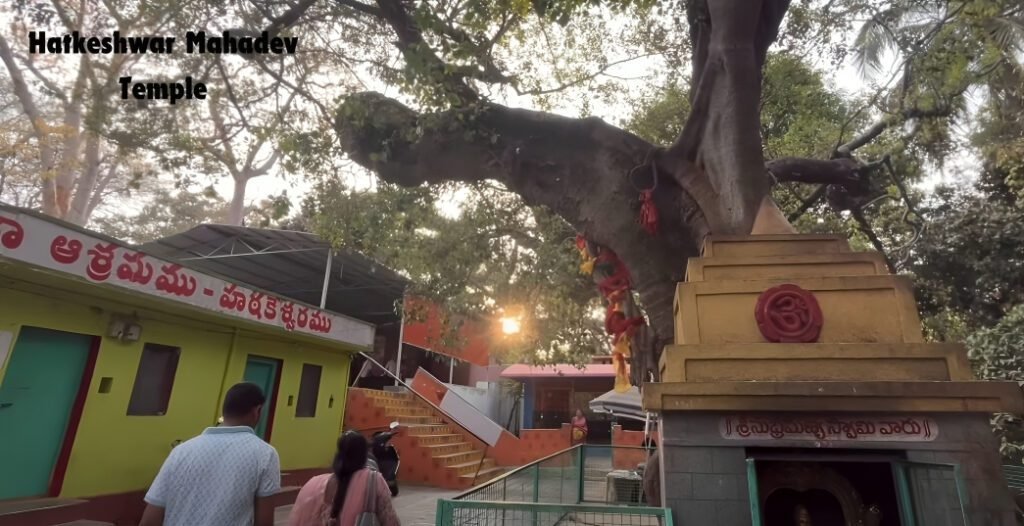
Spiritual Vibes: Known for its serene and tranquil atmosphere, making it a perfect spot for meditation and prayer.
Rituals: Daily poojas and special ceremonies during festivals attract numerous devotees.
Nallamala Hills
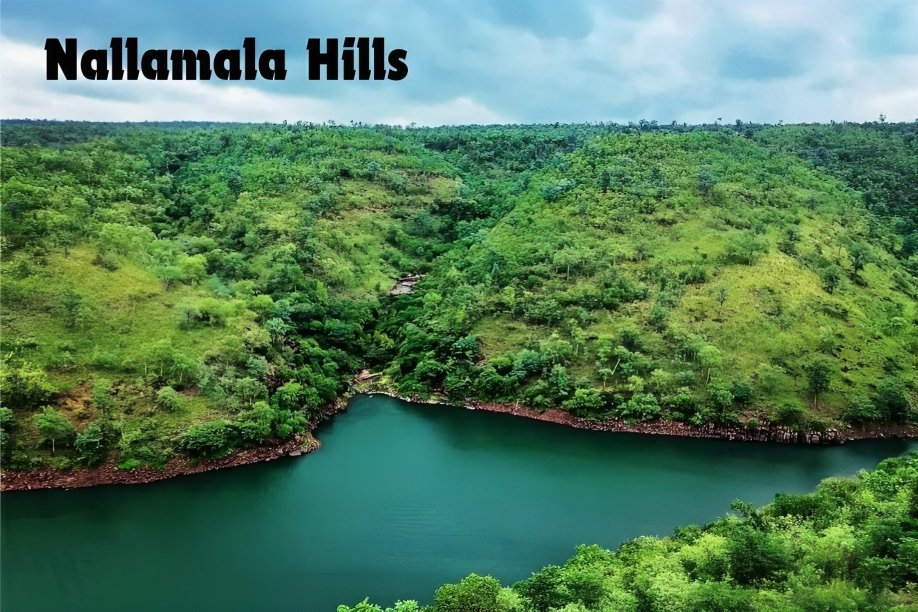
The Mallikarjuna Temple is nestled amidst the verdant Nallamala Hills, a part of the Eastern Ghats. These hills are a haven for nature lovers and adventure enthusiasts, offering:
Breathtaking Views: The undulating landscape provides stunning panoramic views of the hills and valleys, especially from the vantage points scattered around Srisailam.
Flora and Fauna: The hills are rich in biodiversity, home to numerous species of plants, birds, and animals. The lush forests are ideal for trekking, bird watching, and nature walks.
Eco-Tourism: Several eco-tourism initiatives promote responsible travel and conservation efforts, allowing visitors to explore the natural beauty while preserving the environment.
Krishna River
Flowing gracefully near Srisailam, the Krishna River adds to the spiritual and natural allure of the region:
Boating and Ferry Rides: Visitors can enjoy serene boat rides on the river, offering picturesque views of the surrounding hills and forests.
Sacred Dips: Many devotees take a dip in the Krishna River, believing it to purify the soul and wash away sins. The river is considered sacred and is an integral part of the temple’s spiritual ambiance.
Fishing and Angling: The river is also popular for fishing, with several spots where visitors can try their hand at angling.
Srisailam Dam
One of the largest dams in India, the Srisailam Dam is an engineering marvel:
Hydroelectric Power: The dam generates significant hydroelectric power, contributing to the region’s energy needs.
Scenic Views: The dam’s massive structure and the reservoir behind it create a picturesque setting, especially during the monsoon when the water levels are high.

Tourist Attractions: The dam area is equipped with viewing galleries and picnic spots, making it a popular destination for tourists.
Pathala Ganga
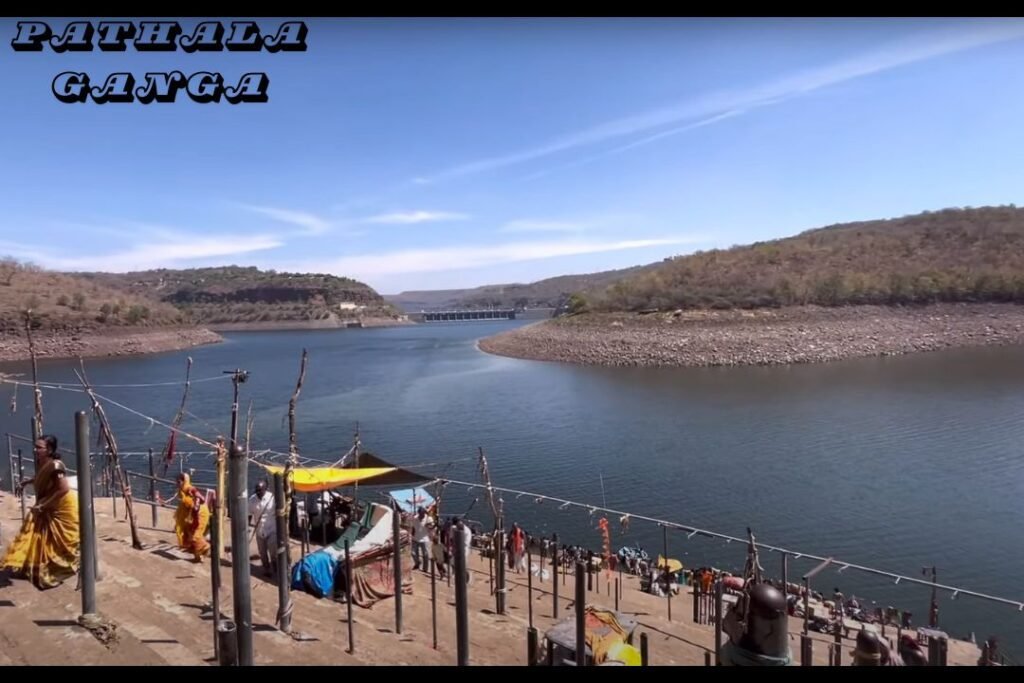
Pathala Ganga is a sacred stretch of the Krishna River that can be reached via a flight of steps from the Srisailam Temple:
Spiritual Significance: It is believed to be one of the holiest spots in the area, with many pilgrims taking a dip in its waters as part of their spiritual journey.
Scenic Cable Car Rides: A ropeway service allows visitors to enjoy a scenic cable car ride down to the river, offering stunning aerial views of the river and the hills.
Akkamahadevi Caves
Located a short distance from the temple, the Akkamahadevi Caves are named after the famous saint-poetess Akkamahadevi:
Historical Significance: These ancient limestone caves are believed to have been the meditation site of Akkamahadevi, who devoted her life to Lord Shiva.
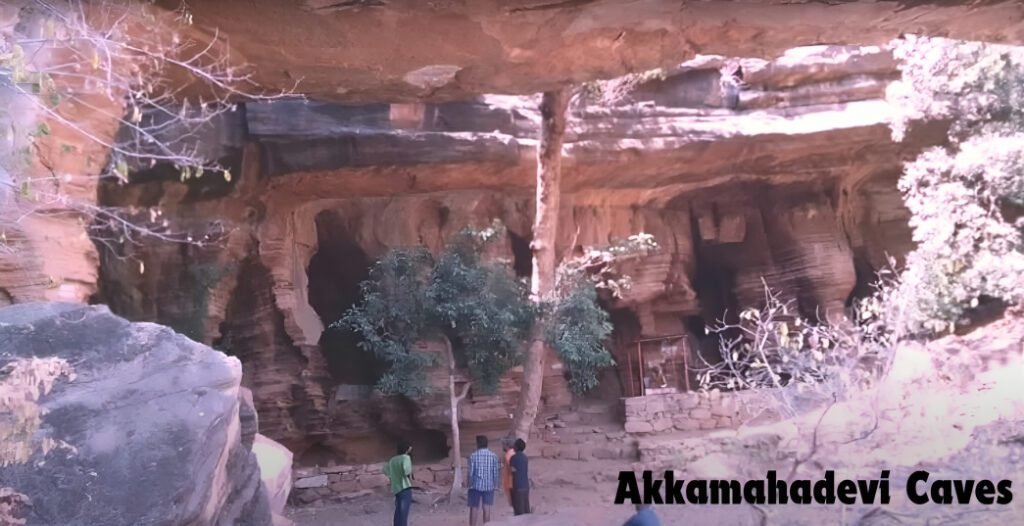
Exploration and Adventure: Accessible by boat from the Patala Ganga (a stretch of the Krishna River), the caves are a fascinating spot for exploration and adventure. The inner sanctum of the caves houses a naturally formed Shiva Linga.
Natural Beauty: The journey to the caves offers breathtaking views of the river and the surrounding forest, enhancing the overall experience.
Shikaresvara Temple
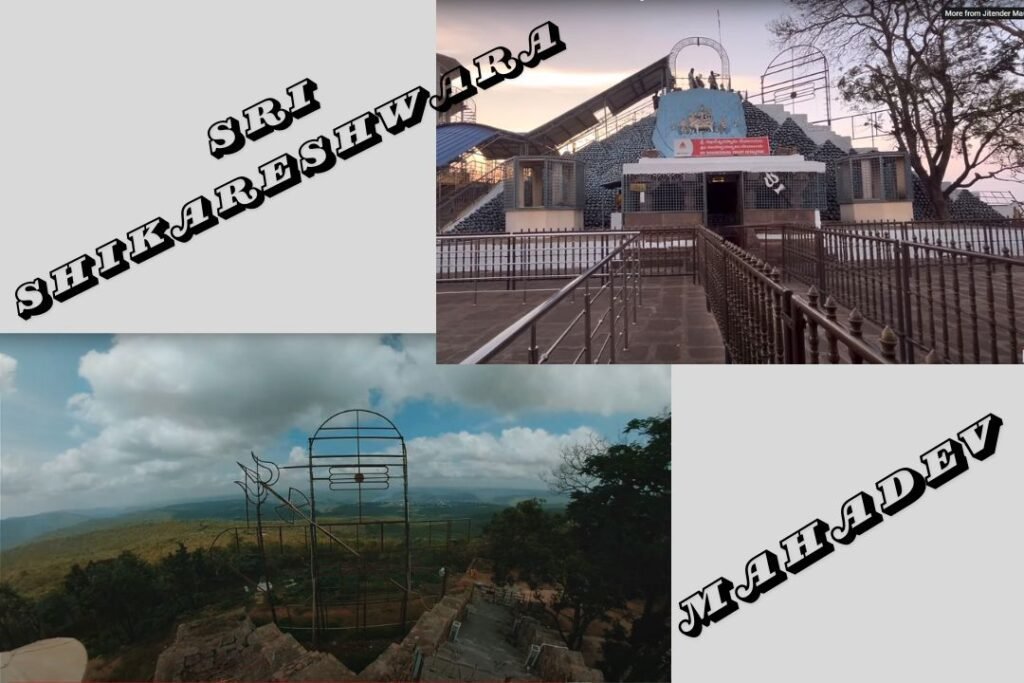
Perched on the highest point of Srisailam, the Shikaresvara Temple is dedicated to Lord Shiva:
Panoramic Views: The temple offers sweeping views of the surrounding hills and forests. It is a wonderful and popular spot for photography and sunset views.
Spiritual Significance: It is believed that offering prayers here grants devotees a glimpse of the divine light or ‘Jyoti’ of the Mallikarjuna Jyotirlinga.
PanchDhara
PanchDhara is a significant natural feature near Srisailam, consisting of five small streams, which are believed to have medicinal properties.
Natural Beauty: The streams are surrounded by lush greenery and rocky terrain, providing a scenic and peaceful environment.
Medicinal Properties: The water from these streams is believed to have healing properties, making it a popular spot for pilgrims seeking physical and spiritual cleansing.
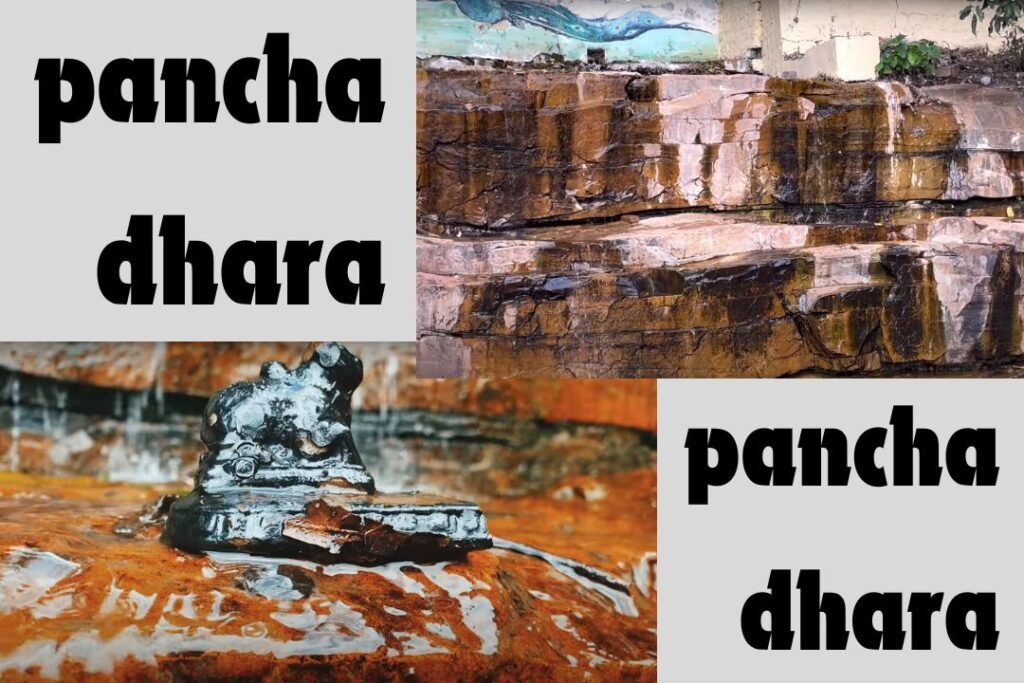
Picnic Spot: It is also a favorite spot for picnics and nature walks.
Srisailam Wildlife Sanctuary
One of the largest tiger reserves in India, the Srisailam Wildlife Sanctuary, also known as the Rajiv Gandhi Wildlife Sanctuary, is a must-visit:
Biodiversity: The sanctuary is home to diverse wildlife, including tigers, leopards, deer, and various species of birds and reptiles. It is a heaven for wildlife enthusiasts and photographers.
Safari and Trekking: The sanctuary offers jungle safari and trekking options, allowing visitors to experience the thrill of the wild and the beauty of the forest.
Conservation Efforts: The sanctuary plays a crucial role in the conservation of endangered species and their natural habitat.
Local Markets and Culture
The vibrant local markets around Srisailam offer a glimpse into the region’s culture and traditions:
Handicrafts and Souvenirs: Visitors can purchase local handicrafts, religious artifacts, and souvenirs. Traditional items like Pooja (prayer) materials, wooden toys, and textiles are popular.
Local Cuisine: The markets and eateries around Srisailam offer a taste of traditional Andhra cuisine, known for its rich flavors and spices. Don’t miss trying local specialties like Pulihora (tamarind rice), Andhra biryani, and various sweets.
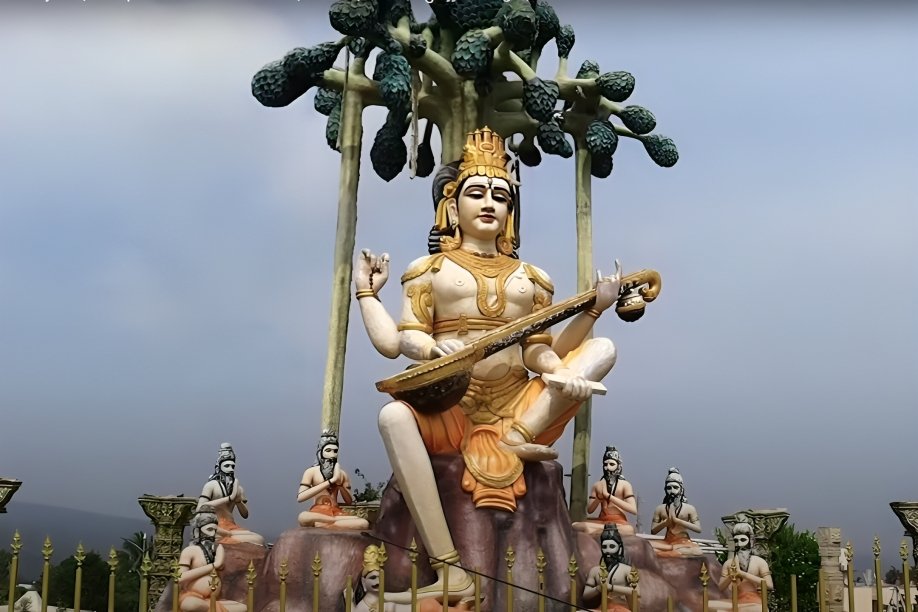

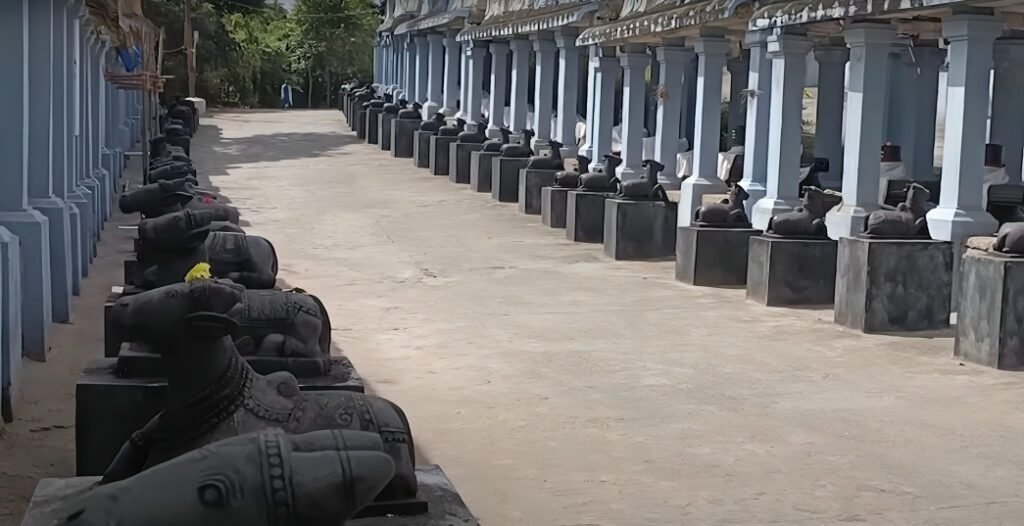
How to Reach
Reaching Srisailam is quite convenient as it is well-connected by road, and there are several options available depending on your starting point. Here’s a detailed guide on how to reach Srisailam:
By Air
Nearest Airport: Rajiv Gandhi International Airport, Hyderabad. Approximately 210 kilometers from Srisailam.
Options: From the airport, you can hire a taxi or take a bus to Srisailam. Several tour operators also offer direct taxi services from the airport to Srisailam.
By Train
Nearest Railway Station: Markapur Road Railway Station. Approximately 85 kilometers from Srisailam.
Options: From Markapur Road, you can hire a taxi or take a local bus to reach Srisailam. The journey through the scenic Nallamala Hills is quite pleasant.
By Road
Srisailam is well-connected by road and can be accessed by bus, car, or taxi.
From Hyderabad: The distance is about 213 kilometers. Direct buses operated by APSRTC (Andhra Pradesh State Road Transport Corporation) are available. Alternatively, you can drive or hire a taxi.
- Route: Hyderabad -> Dindi -> Srisailam.
From Vijayawada: The distance is about 300 kilometers. Buses and taxis are available. It is also a good idea to drive your own vehicle.
- Route: Vijayawada -> Guntur -> Macherla -> Srisailam.
From Bangalore: The distance is about 500 kilometers. Several private and state-run buses regularly operate on this route. May also hire taxi or drive.
- Route: Bangalore -> Anantapur -> Kurnool -> Dornala -> Srisailam.
Local Transportation
Once you reach Srisailam, local transportation options include:
Auto Rickshaws: Convenient for short distances within Srisailam.
Taxis: Available for hire to visit nearby attractions and temples.
Buses: Local buses run by APSRTC connect various points within Srisailam and nearby areas.
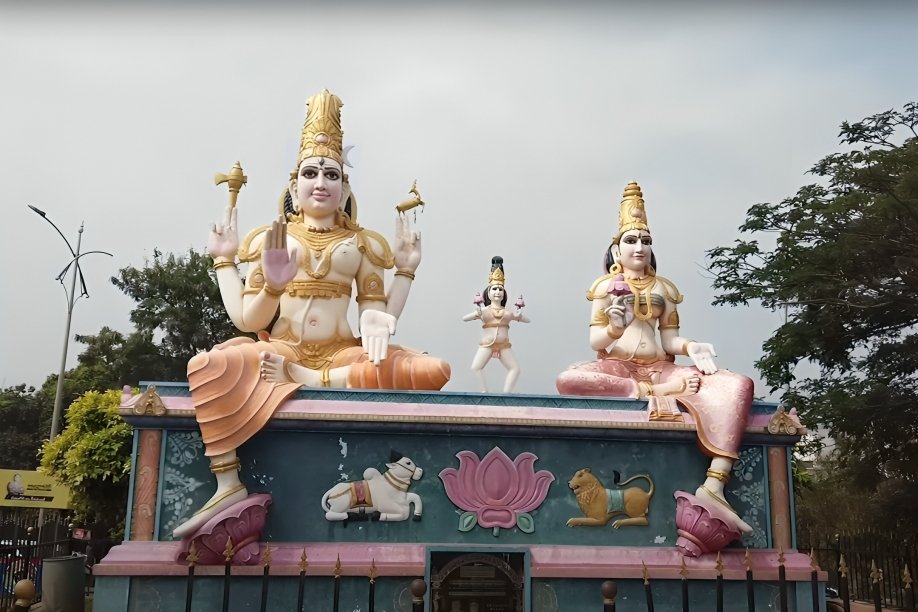
Accommodations
Budget
- Srisaila Devasthanam Guest Houses: Near Srisailam Temple
- Private Lodges: Various locations around Srisailam
Mid-Range
- Haritha Hotel Srisailam: Near Srisailam Bus Stand
- Punnami Srisailam: Near Srisailam Bus Stand
- Sri Krishna Deluxe Lodge: Near Srisailam Bus Stand
Luxury
- Hotel Srisaila Mahal: Near Srisailam Temple
- Hotel Sahasra Residency: Near Srisailam Bus Stand
- Bhuvanagiri Fort Hotel: Near Srisailam Bus Stand
Dharamshalas and Ashrams
- Akhila Bharatha Ayyappa Seva Sangham: Near Srisailam Temple
- Sri Padmavathi Guest House: Near Srisailam Temple
Local Cuisine
Srisailam offers a delectable array of local cuisine that reflects the rich culinary heritage of Andhra Pradesh. Here are some must-try dishes and specialties:
Pulihora (Tamarind Rice): A tangy and flavorful rice dish made with cooked rice mixed with tamarind paste, spices, and garnished with fried peanuts and curry leaves.
Gongura Pachadi: A spicy chutney made from Gongura leaves (sorrel leaves), red chilies, garlic, and other spices. It pairs well with rice and ghee.
Andhra Biryani: A fragrant and spicy rice dish cooked with marinated meat (chicken, mutton, or fish), aromatic spices, and herbs. It’s often served with raita (yogurt-based side dish) and salan (spicy gravy).
Royyala Iguru (Prawn Curry): A spicy and tangy curry made with fresh prawns, onions, tomatoes, tamarind, and a blend of Andhra spices. It’s typically served with steamed rice or roti.
Pesarattu: A traditional Andhra breakfast dish made from green gram (moong dal) batter, seasoned with onions, green chilies, and ginger. It’s often served with ginger chutney or coconut chutney.
Ulavacharu: A nutritious and flavorful stew made from horse gram (ulavalu), cooked with tamarind, onions, tomatoes, and spices. It’s usually served with steamed rice and ghee.
Aratikaya Bajji: Deep-fried fritters made from raw plantain slices dipped in a gram flour batter, seasoned with spices. They are crispy on the outside and soft on the inside, served with chutney or sauce.
Sakinalu: Crispy and savory rice flour snacks, shaped like concentric circles, and deep-fried until golden brown. They are popular during festivals and celebrations.
Pootharekulu: A traditional Andhra sweet made from rice flour, jaggery, ghee, and cardamom. The mixture is spread thinly between layers of edible rice paper and rolled into cylindrical shapes.
Bobbatlu (Puran Poli): A classic Andhra sweet prepared during festivals and special occasions. It consists of a sweet filling made from chana dal (split chickpeas), jaggery, and coconut, encased in a soft, thin layer of dough and cooked on a griddle.
Travel Tips and Safety Advice
Plan Ahead: Research about the temple timings, local customs, and weather conditions before your trip.
Book Accommodation in Advance: Especially during peak seasons and festivals, book your accommodation well in advance to ensure availability.
Pack Appropriately: Carry comfortable clothing, walking shoes, sunscreen, hats, and sunglasses, especially if you plan to explore outdoor areas.
Photography: Keep your camera handy and charged to capture spontaneous moments and stunning landscapes effortlessly.
Stay Hydrated: Carry water bottles and stay hydrated, especially during hot weather and long walks.
Respect Local Customs: Follow the dress code and respect the religious customs and traditions observed at the temples and other sacred sites.
Keep Cash Handy: While some places accept cards, it’s advisable to carry cash for local transactions and offerings at temples.
Beware of Monkeys: Srisailam is known for its monkey population. Be cautious with food items and valuables, as monkeys may try to snatch them.
Explore Nearby Attractions: Take time to explore nearby attractions such as the Nallamala Hills, Srisailam Wildlife Sanctuary, and Patala Ganga.
Stay Vigilant: Be mindful of your surroundings, especially in crowded areas and tourist spots.
Secure Valuables: Keep your belongings safe and secure. Avoid carrying large amounts of cash in public or wearing expensive jewelry.
Stay Informed: Stay updated on local news and weather forecasts, especially during monsoon seasons when landslides and road closures may occur.
Follow Safety Signage: Pay attention to safety signage and warnings, especially in areas prone to accidents or natural hazards.
Avoid Risky Activities: Refrain from participating in risky or adventurous activities without proper safety precautions and guidance.
Respect Wildlife: If you’re exploring natural areas, maintain a safe distance from wildlife and refrain from feeding or disturbing them.
Conclusion
Mallikarjuna Jyotirlinga is more than a religious site; it is a journey into the spiritual heart of India. Its historical significance, architectural beauty, and serene surroundings make it a compelling destination for both devotees and travelers. Whether you are seeking spiritual growth, cultural immersion, or simply a peaceful retreat, Mallikarjuna Jyotirlinga offers an experience that resonates deeply with the soul.
Join us at Gujju Traveling in exploring this divine marvel and uncover the profound mysteries of Mallikarjuna Jyotirlinga. May your journey be blessed and enriching.

Frequently Asked Questions (FAQs)
What is Srisailam famous for?
Srisailam is famous for its Mallikarjuna Temple, one of the twelve Jyotirlingas dedicated to Lord Shiva. It is also known for its scenic beauty, surrounded by the Nallamala Hills and the Krishna River.
How to reach Srisailam?
Srisailam can be reached by road from nearby cities like Hyderabad, Vijayawada, and Bangalore. The nearest railway station is Markapur Road, and the nearest airport is Rajiv Gandhi International Airport in Hyderabad.
What are the temple timings at Mallikarjuna Temple?
The temple timings at Mallikarjuna Temple are usually from early morning until late evening. However, it’s advisable to check the specific timings before planning your visit.
Is there a dress code for going to a temple?
Yes, visitors are expected to dress modestly while visiting the temple. As it is a religious place, shorts, sleeveless tops and revealing clothes are not allowed.
What are the accommodation options available in Srisailam?
Srisailam offers a range of accommodation options, including guesthouses, lodges, hotels, and dharamshalas, catering to different budgets and preferences.
Are there any nearby attractions to visit in Srisailam?
Yes, there are several nearby attractions such as Panchadhara, Akkamahadevi Caves, Srisailam Wildlife Sanctuary, and Pathala Ganga, which are worth exploring.
What are the popular festivals celebrated in Srisailam?
Mahashivaratri, Kartik Purnima, and Brahmotsavam are some of the popular festivals celebrated with grandeur in Srisailam.
Is it safe to travel to Srisailam?
Srisailam is generally considered safe for travelers. However, it’s advisable to exercise caution, especially in crowded areas, and to follow basic safety precautions.
Are there any trekking or adventure activities available in Srisailam?
Yes, there are opportunities for trekking and adventure activities in the Nallamala Hills and the surrounding areas. However, it’s recommended to go with a guide and take necessary precautions.
Can I take a boat ride in Srisailam?
Yes, boat rides are available on the Krishna River, offering scenic views of the surroundings. Patala Ganga is a popular spot for boat rides.
Is photography allowed inside the Mallikarjuna Temple?
Photography is generally not permitted inside the sanctum sanctorum of the temple. However, you may be allowed to take photographs in other areas of the temple complex.
What are the local delicacies to try in Srisailam?
Some of the local delicacies to try in Srisailam include Pulihora (Tamarind Rice), Gongura Pachadi, Andhra Biryani, Royyala Iguru (Prawn Curry), and Pesarattu.
Can I visit Srisailam with family?
Yes, Srisailam is a family-friendly destination with facilities and attractions suitable for visitors of all ages. However, it’s advisable to plan your visit and accommodation in advance, especially during peak seasons.
Are there any restrictions for non-Hindu visitors at the Mallikarjuna Temple?
Non-Hindu visitors may have limited access to certain areas of the temple complex. It’s advisable to inquire about any restrictions at the entrance before entering the temple premises.

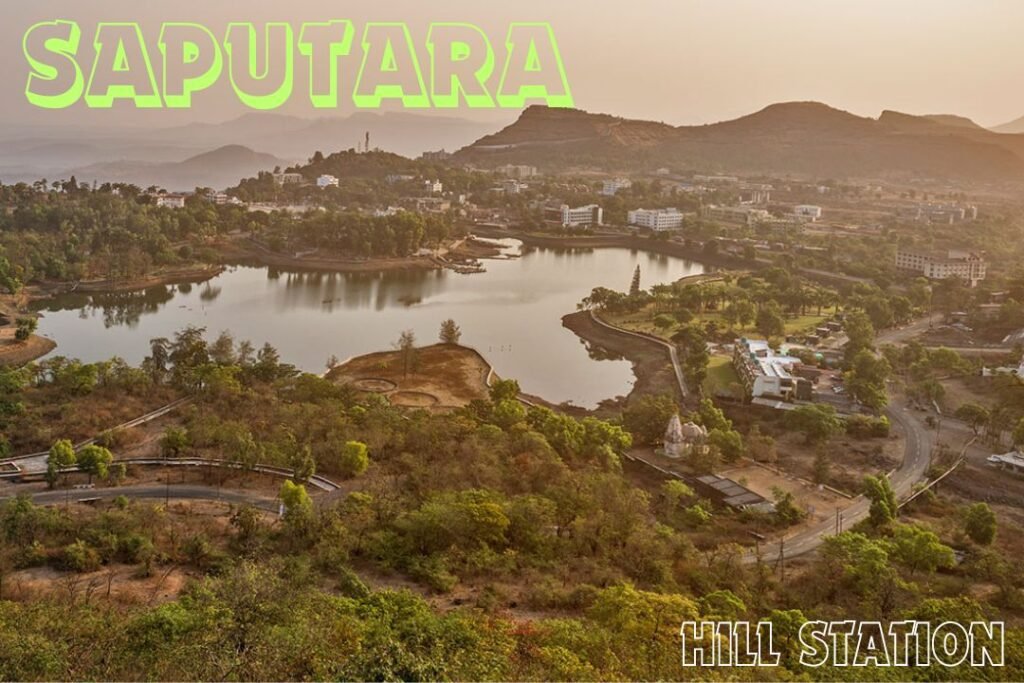
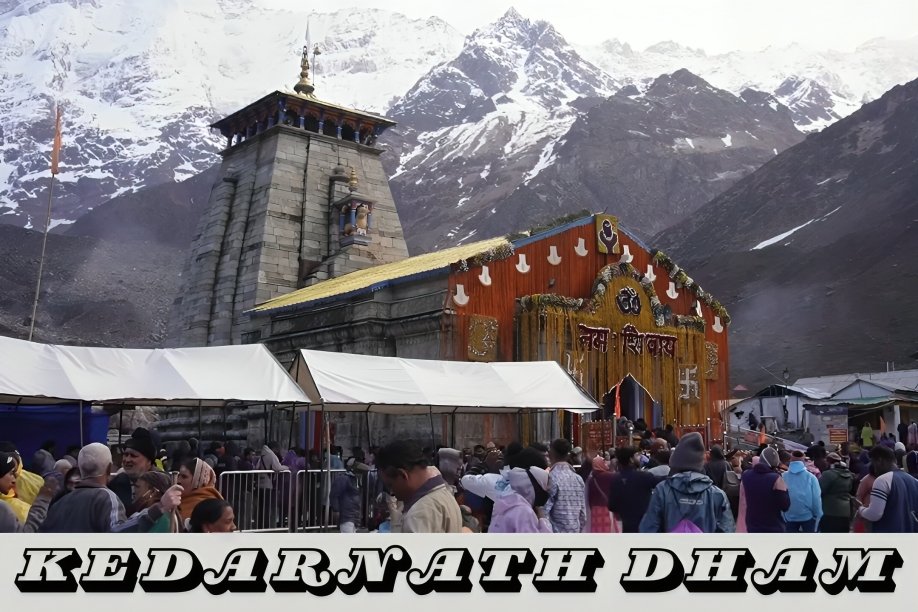
Yes, sure
https://hostinger.in?REFERRALCODE=1GAURANG42
I am using Hostinger’s web hosting. But please watch its review video on youtube.
Pingback: Mahakaleshwar Temple: A Sanctuary of Divine Energy - GujjuTraveling